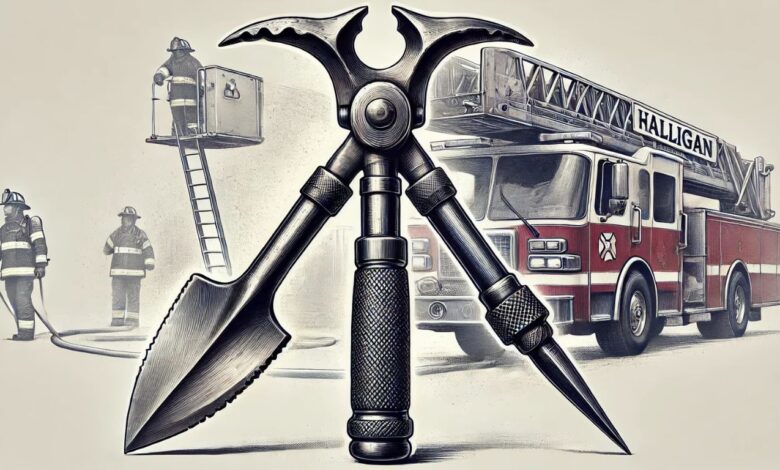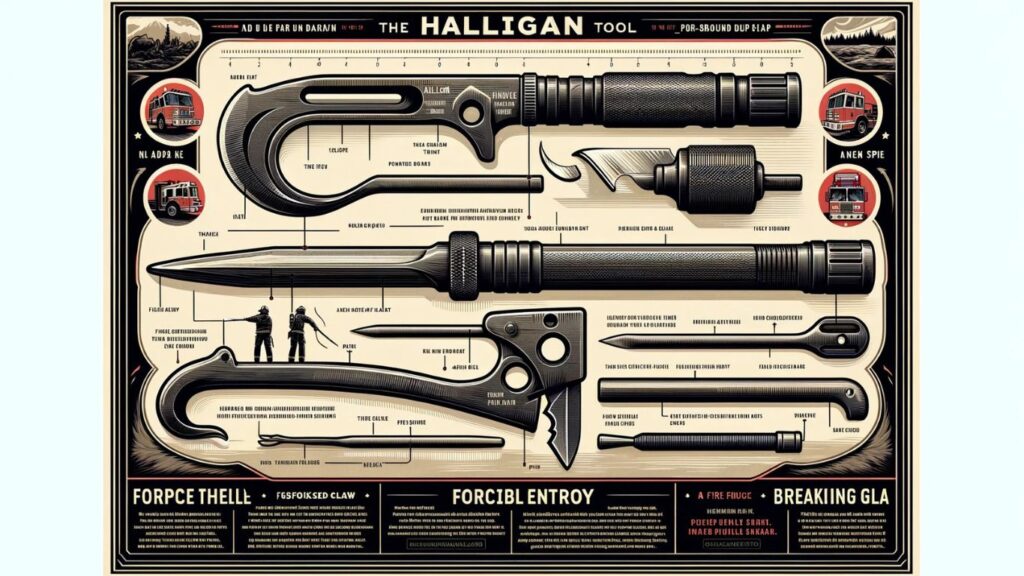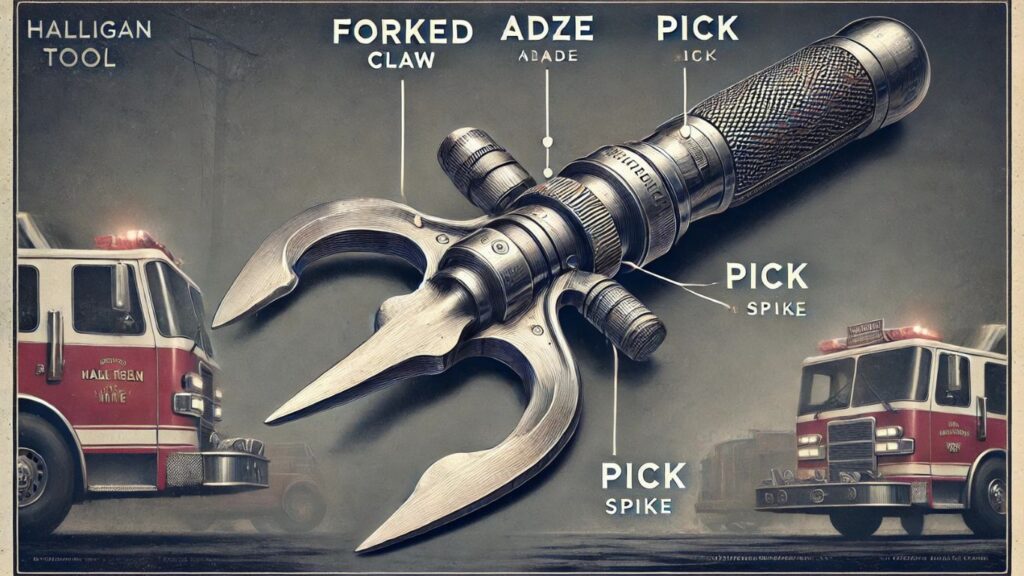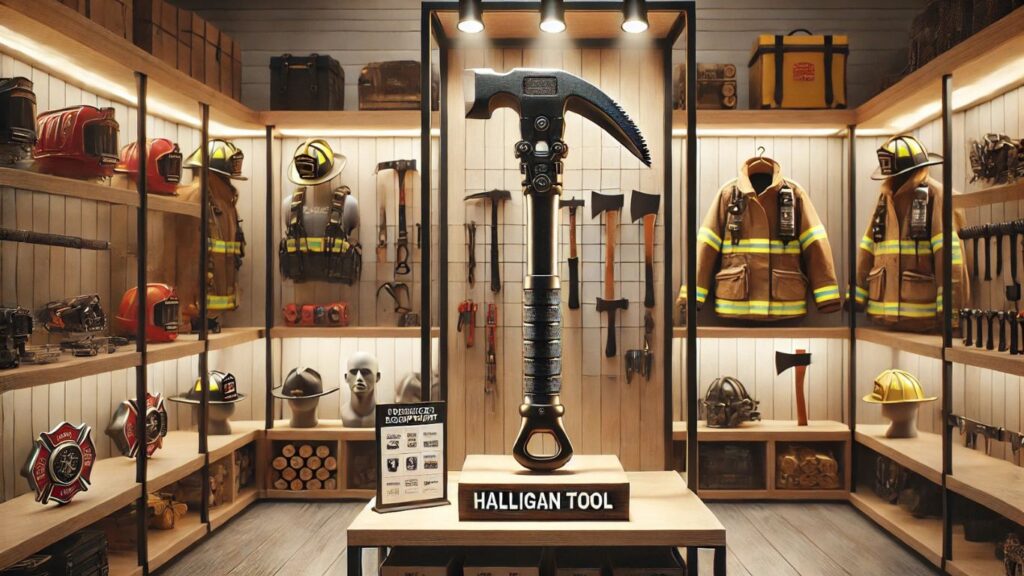The Halligan Tool: The Ultimate Firefighting and Rescue Equipment

Introduction
When it comes to firefighting and emergency rescue operations, few tools are as essential and universally recognized as the Halligan tool. This versatile piece of equipment is a staple in fire departments around the world, known for its ability to break through doors, pry open windows, and create access in high-pressure situations. Originally designed for forcible entry, the Halligan tool has evolved into a multi-functional device that plays a critical role in saving lives.
In this article, we’ll take a deep dive into the history, design, variations, and real-world applications of the Halligan tool, exploring why it remains an indispensable asset for firefighters and emergency responders.
The History of the Halligan Tool

The Halligan tool was invented in 1948 by Hugh Halligan, a First Deputy Fire Chief of the New York City Fire Department (FDNY). At the time, firefighters needed a more efficient tool for forcible entry, and Halligan designed a device that was durable, lightweight, and capable of handling multiple functions.
Before the Halligan tool, firefighters relied on the Kelly tool, which had some limitations. Halligan improved upon the design, creating a tool that combined strength and leverage while eliminating weak points. Despite early resistance from FDNY due to potential conflicts of interest, the Halligan tool quickly gained popularity among fire departments nationwide.
The Design and Structure of the Halligan Tool
The Halligan tool consists of three primary components:
The Claw (Forked End)
- Designed for prying doors, locks, and windows.
- Often used in combination with a flat-head axe.
The Adze (Blade End)
- A curved blade used for forcing doors, breaking locks, and breaching walls.
- Works as a wedge to create entry points in emergency situations.
The Pick (Tapered Spike)
- Used for puncturing walls, breaking glass, and creating leverage points.
- Helps in gaining access to hard-to-reach areas.
Each of these components contributes to the tool’s overall efficiency, making it an all-in-one solution for rescue operations.
Uses and Applications of the Halligan Tool
Forcible Entry
- Firefighters use it to break down doors and remove obstacles.
- Helps gain quick access to burning buildings.
Vehicle Extrication
- Assists in prying open car doors during accident rescues.
- Used to create space for hydraulic rescue tools (Jaws of Life).
Ventilation Operations
- Firefighters use the Halligan tool to break windows and create ventilation points.
Structural Collapse and Urban Search & Rescue (USAR)
- Helps remove debris and gain entry to confined spaces.
- Provides leverage to lift or pry apart collapsed structures.
Self-Rescue and Firefighter Survival
- Firefighters can use the Halligan tool to create an escape route if trapped.
- Assists in removing debris in dangerous situations.
Halligan Tool Variations and Modern Adaptations

Over the years, different versions of the Halligan tool have been developed to suit various needs.
Traditional Halligan Tool
- Forged from a single piece of steel for durability.
- Ranges from 24 to 42 inches in length.
Pro-Bar Halligan
- Considered the gold standard among firefighters.
- Features a refined design for optimal leverage and efficiency.
Hooligan Tool
- A variation used by law enforcement and SWAT teams.
- Designed for breaching doors during tactical operations.
Mini Halligan Tool
- A compact version for quick response teams and emergency personnel.
- Often used for confined-space rescues.
Titanium and Lightweight Halligan Tools
- Made with titanium or aluminum for reduced weight.
- Ideal for firefighters who need to move quickly in demanding environments.
Training and Proper Use of the Halligan Tool
Firefighters and emergency responders undergo rigorous training to master the Halligan tool. Proper technique ensures maximum efficiency and safety during operations.
Techniques for Effective Use
- Combining the Halligan tool with a flat-head axe (known as the “irons” set) for enhanced impact force.
- Using the adze end for quick entry into buildings.
- Employing controlled force to minimize damage while gaining entry.
Common Mistakes to Avoid
- Applying force incorrectly, leading to tool slippage or inefficiency.
- Not positioning the tool properly before prying.
- Relying on a worn or poorly maintained tool.
Advantages of the Halligan Tool

The Halligan tool is widely praised for its efficiency and reliability. Here are some of its key advantages:
- Versatility: Can be used for multiple tasks, including forcible entry, rescue, and extrication.
- Durability: Made from high-strength steel, ensuring longevity and reliability.
- Ease of Use: Requires minimal training compared to other entry tools.
- Compact Design: Easily carried and stored with other firefighting equipment.
Frequently Asked Questions (FAQs)
1. What is the difference between a Halligan tool and a pry bar?
The Halligan tool is a specialized forcible entry tool designed for firefighters and emergency responders, whereas a standard pry bar is used for general construction and demolition work.
2. How much does a Halligan tool weigh?
Most Halligan tools weigh between 8 to 12 pounds, depending on the material and length.
3. Is the Halligan tool only for firefighters?
No. While it is primarily used in firefighting, law enforcement and military personnel also use modified versions for tactical operations.
4. What is the best Halligan tool for beginners?
The Pro-Bar Halligan is recommended for beginners due to its well-balanced design and ease of use.
5. Can civilians buy a Halligan tool?
Yes. Many hardware stores and online retailers sell Halligan tools, but they are primarily intended for professional use.
Conclusion
The Halligan tool is an indispensable part of firefighting and rescue operations. Designed over 70 years ago, it remains one of the most effective and reliable tools in the field. Whether used for forcible entry, vehicle extrication, or search-and-rescue missions, its strength, versatility, and ease of use make it a must-have for emergency responders worldwide.
As technology continues to evolve, the Halligan tool proves that sometimes, the simplest tools are the most effective. Firefighters and first responders rely on it daily, reinforcing its legacy as one of the greatest innovations in fire service history. Its continuous use in emergency operations ensures that it will remain an integral part of fire and rescue teams for generations to come.
VISIT FOR MORE INFORMATION Dailynewsbizz.com




